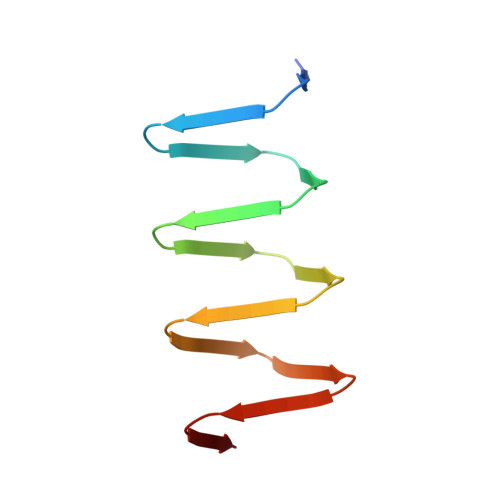Structure and Biophysical Properties of a Triple-Stranded Beta-Helix Comprising the Central Spike of Bacteriophage T4.
Buth, S.A., Menin, L., Shneider, M.M., Engel, J., Boudko, S.P., Leiman, P.G.(2015) Viruses 7: 4676-4706
- PubMed: 26295253
- DOI: https://doi.org/10.3390/v7082839
- Primary Citation of Related Structures:
4JJ2, 4OSD - PubMed Abstract:
Gene product 5 (gp5) of bacteriophage T4 is a spike-shaped protein that functions to disrupt the membrane of the target cell during phage infection. Its C-terminal domain is a long and slender β-helix that is formed by three polypeptide chains wrapped around a common symmetry axis akin to three interdigitated corkscrews. The folding and biophysical properties of such triple-stranded β-helices, which are topologically related to amyloid fibers, represent an unsolved biophysical problem. Here, we report structural and biophysical characterization of T4 gp5 β-helix and its truncated mutants of different lengths. A soluble fragment that forms a dimer of trimers and that could comprise a minimal self-folding unit has been identified. Surprisingly, the hydrophobic core of the β-helix is small. It is located near the C-terminal end of the β-helix and contains a centrally positioned and hydrated magnesium ion. A large part of the β-helix interior comprises a large elongated cavity that binds palmitic, stearic, and oleic acids in an extended conformation suggesting that these molecules might participate in the folding of the complete β-helix.
Organizational Affiliation:
Institute of Physics of Biological Systems, École Polytechnique Fédérale de Lausanne (EPFL), BSP 415, 1015 Lausanne, Switzerland. sergii.buth@epfl.ch.


















